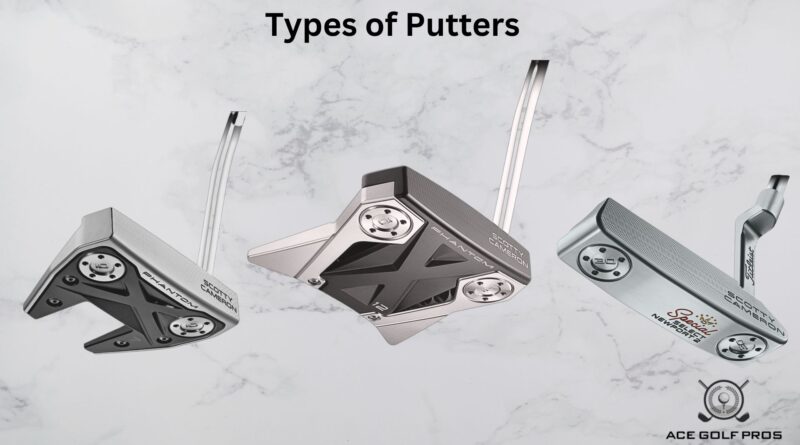Types of putters – a complete guide
Even for seasoned golfers, finding the the right putter can be a challenge. With so many types of putters to choose from, sometimes it’s hard to even know where to start. The guide aims to explain the main types of putters, and why they will make a difference in your golf game.
Types of putters – basic putter styles
There are two main types of putters that every player needs to be familiar with:
- mallet putters
- blade putters
This is the biggest difference in putter styles, and this choice will have the biggest impact on your game.
Mallet putters
Mallet style putters are the most popular type of putter on the green, and can be found in the bags of golfing pros such as Sergio Garcia, Rory McIlroy, Dustin Johnson, and Robert MacIntyre. A mallet putter typically has larger and heavier club head than traditional blade putter.
Many players favor mallet putters due to their larger club face, which is more forgiving on mishits, making the club easier to learn. Additionally, the heavier club head gives the putter a higher MOI (moment of inertia), increasing stability on impact and transferring more momentum to the ball.
High MOI
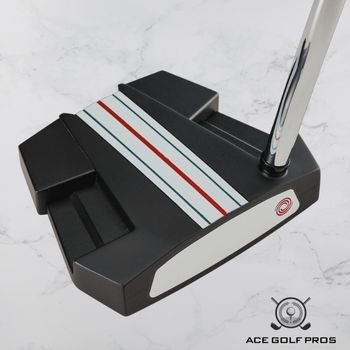
If a golf club brand has a “High MOI” mallet putter, then this model will usually have the largest putter head available in that company’s lineup. These clubs are designed to exaggerate the mallet putter’s high MOI feature. Clubs in this category are some of the most stable and forgiving putters out there.
For high MOI putters, manufacturers usually add an alignment aid on the top of the putter head. A good alignment aid, in addition to the stability and forgiveness of these clubs, makes them a great choice for beginners and high handicappers.
High MOI clubs are almost always face balanced for a straight back straight forward putting stroke.
Popular high MOI mallet putters include the Taylormade Spider GT and the Callaway Odyssey.
Mid Mallet
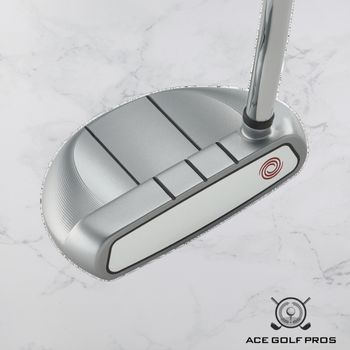
Mid mallet putters are a size down from high MOI putters. These types of putters offer some of the stability and forgiveness found in larger mallets, but with a more compact and streamlined club design.
These clubs are popular with players that want something in-between a mallet and a blade putter. They offer a nice tradeoff between the high momentum of larger clubs and the maneuverability of smaller clubs.
Many of these club types are slightly toe balanced, which give them more arc to their putting stroke compared to a face balanced putter.
Popular examples of mid mallet putters include the Callaway Odyssey White Hot OG and the Scotty Cameron Flowback 5.
Fang mallet
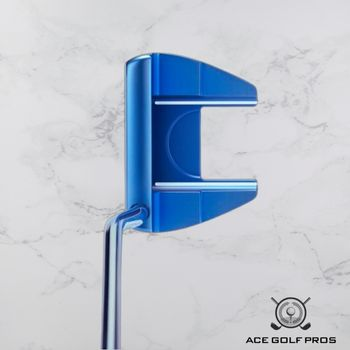
Fang mallets are a special design of mallet putter, where instead of the back being rounded, the back is weighted with two “fang” spikes on the toe and heel of the club. Many mallets and mid mallets can have this design. They can either be face balanced or toe weighted depending on the club.
Blade putters
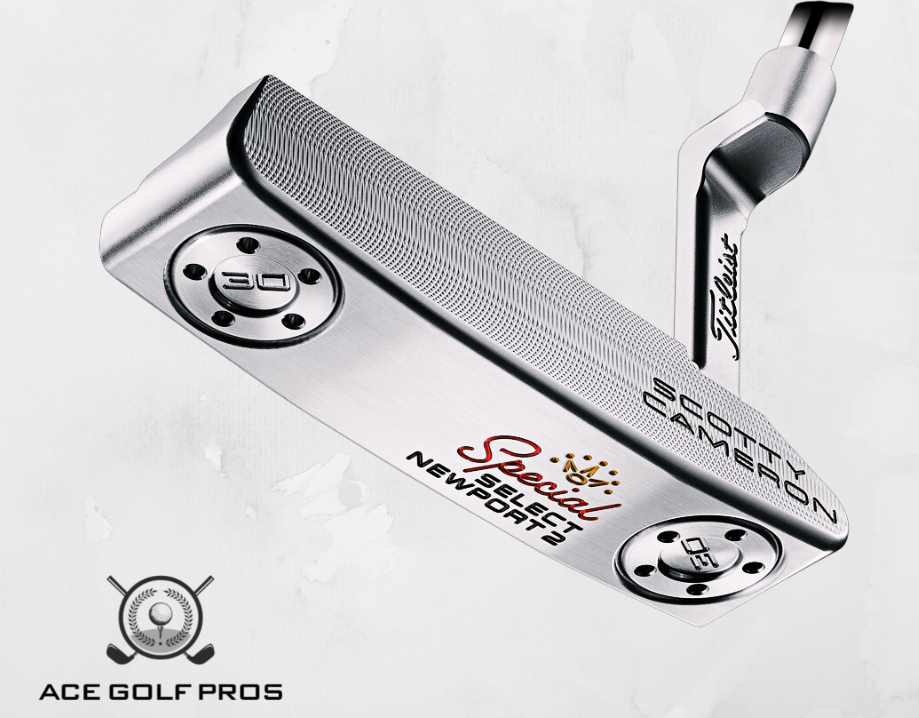
Blade putters have a much smaller putter head than a mallet putter, and the putter head usually has a traditional “anser style” shape to it. They have the classic design that most players think of when they picture a putter.
Due to their lighter club weight and smaller putter head, these clubs mishit much more easily than a mallet putter. Therefore, because of their steeper learning curve, they are usually only favored by skilled players that appreciate the club’s maneuverability and feel.
Blade putters are usually toe balanced, meaning they dare best for players with an arc to their stroke.
The most famous version of the blade putter is the Scotty Cameron Newport 2. This putter leapt into the spotlight after being used by Tiger Woods to win numerous golf tournaments.
Putter weighting
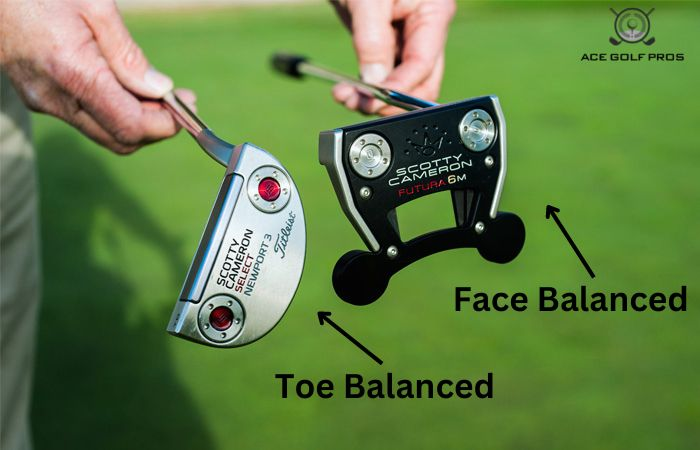
Putters can generally be grouped into two categories:
- Toe balanced putters
- Face balanced putters
These two groups are based on the weighting of the clubhead, which impacts how much arc that the club’s swing will naturally have.
To determine what type of balance your putter has, rest the shaft of putter horizontally on your hand or a tabletop. If the face points up, your have a face balanced putter. If instead, the toe points down, you have a toe balanced putter.
Toe balanced putters
Toe balanced putters are heavily weighted towards the toe of the club. This weighting causes the club face to open slightly during the start of a swing and close towards the golf ball at the end of the swing. This design promotes an arc putting stroke.
It’s possible to have different degrees of toe weighting, meaning that some putters will only have a slight natural arc and some putters will have a much more pronounced arc to their swing.
For a listing of our favorite toe hang putters, see our best toe hang putters article.
Face balanced putters
Face balanced putters have a weight that’s evenly distributed through the face of the club. This means that these clubs will naturally have no arc, and will instead favor a straight back and straight forward putting stroke.
Face balanced putters are heavily favored by newer players, as the straight back and straight forward stroke is much easier to learn.
For a listing of our favorite face balanced putters, see our best face balanced putters article.
Putter construction
There are two main ways that golf clubs can be constructed. These two methods are:
- Milled
- Cast
These two types of putters are constructed using very different methods. While milled putters are CNC milled from one solid block of metal, cast putters are built from a set of separately made parts.
Milled putters
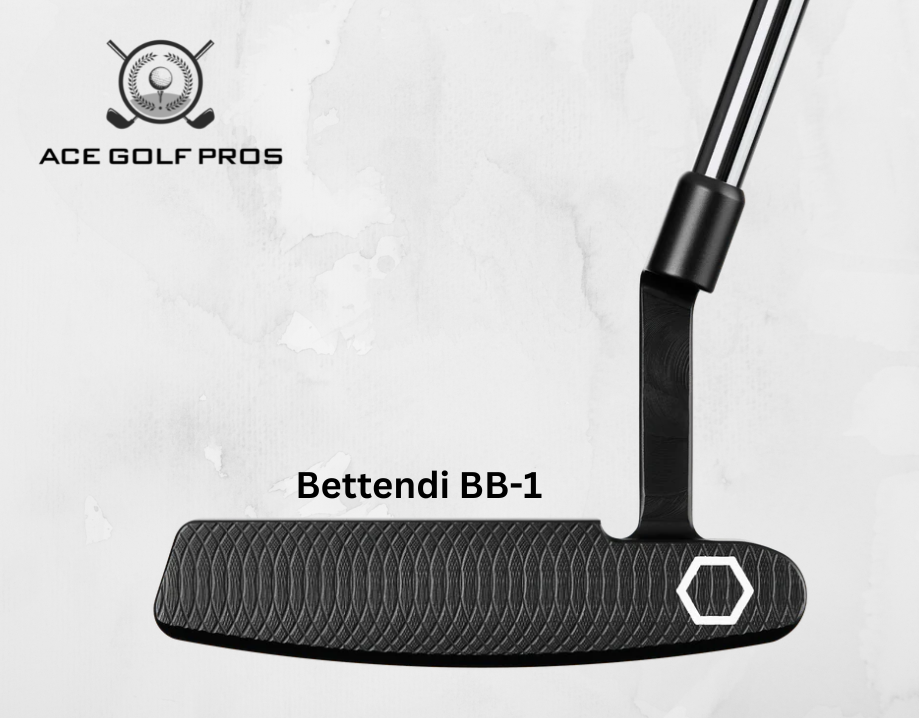
Milled putters have a club head that is built entirely from one block of metal. This is purported to have a couple of advantages:
- Great feel: The metal used in milled putters tends to have a soft feel, while also maintaining a strong structure. Milled putter faces also tend to have lots of grooves that impart a soft touch to the ball.
- Great feedback: Since the entire club head is solid, you can feel where the club hits the golf ball much easier.
- Great styling: Milled putters are solid metal and tend to have a very attractive look. Some classic styles such as the Scotty Cameron Newport 2 and the Ping Anser club are both milled putters.
Most milled putters are blade putters, because it’s difficult to make larger mallet putters using this process.
For a listing of our favorite milled putters, see our best milled putters article.
Cast putters

Cast putters are made from separate parts that are then assembled together. This gives the manufacturer a lot of flexibility with the materials and design of the putter. There are several advantages to using this method:
- Specialized part design: Whereas milled putters are limited to one type of material, cast putters can use different materials for their head and club face. This lets the manufacturer select the best materials for each part of the putter, rather than one material which is good enough.
- Higher MOI: It’s easier to build a large, heavy putter using cast construction. Almost all mallet putters and high MOI putters are a cast design.
Cast designs are very popular for newer putters, which tend to have a higher MOI.
Putter shaft types
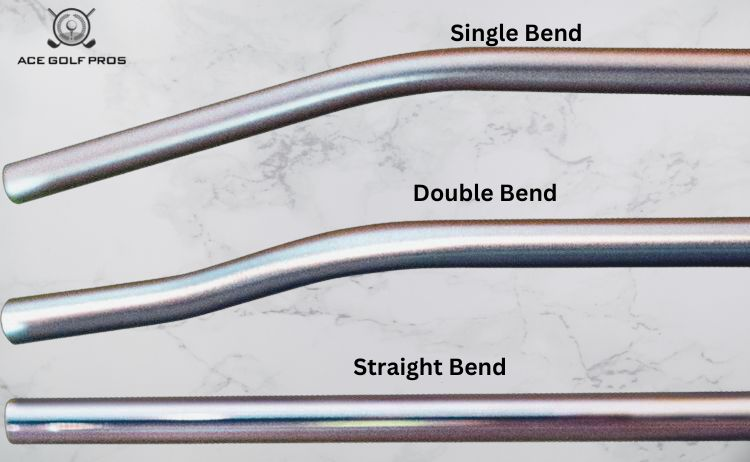
There are several different shaft types that a putter may use. These are:
- Straight shaft
- Single bend
- Double bend
The the only consistent difference between these shaft types is the number of bends in the shaft. Depending on the overall putter design, the shape of the shaft may affect the offset and balancing of the club.
Different shaft designs can give a slightly different feel and look to the club. The putter shaft can give more or less toe flow, which impact’s the club’s balance. It can also affect the offset of the club, which impacts the look that the golfer gets at address. Finally, the putter shaft can impact angle that the hand meets the putter grips, which will also change the club’s feel.
For a complete discussion on how putter shaft types impact your putter and golf swing, see our article on Single Bend vs Double Bend Putter Shafts.
Putter Hosels
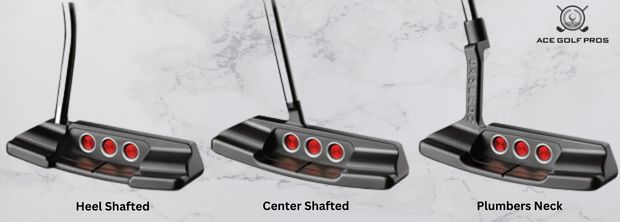
Heel shafted putters
Heel shafted putters have a hosel that is placed at the heel of the club, which is the side of the club head that is closest to the golfer. This is the most common type of hosel.
Center shafted putters
Center shafted putters have a hosel that is placed at the center of the club. Usually these types of putters have reduced toe hang due where the shaft connects with the putter head.
Plumbers neck
This type of neck is usually at the heel of the club, but this design allows an offset on the clubhead. An offset gives a good angle and view of the golf ball at address.
Flow neck
Flow neck putters tend to have a longer putter neck that can be curved however the designers would like. Usually the curve is done to control the angle of the shaft and the offset of the club.
Putter length
Traditional length (32-36 inches)
Traditional length putters are the most common type of putter in the golfing world. These clubs are typically what you think of when you imagine a putter.
They are short enough to let your arms hang down comfortably and create a “pendulum” putting stroke with swinging the club.
Traditional putters can be found everywhere, and accommodate people of most heights. In fact, you will usually have to go out of your way to find a putter that is not a traditional length.
Belly putter (41-46 inches)
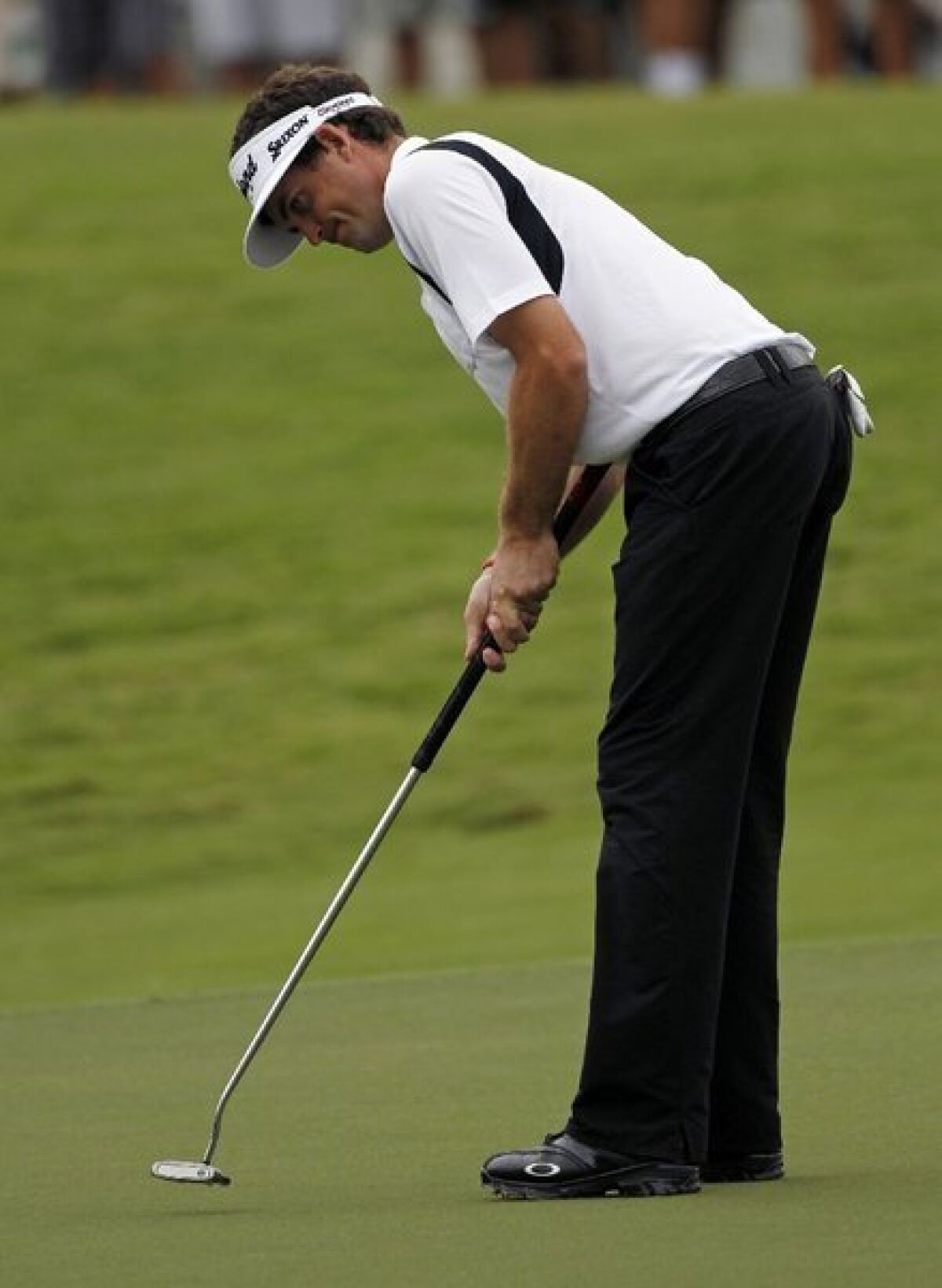
Belly putters are a newer style of club. These golf clubs are long enough that they allow a player to “anchor” the club by holding the end against their body. Some players like this style due to the increased stability from the contact point at the player’s torso.
Belly putting has been banned from competition play since 2016. In theory, you could still use one of these putters as long as you don’t belly putt, since only the style of putting has been banned.
In practice, there is little reason to use on of these putters if you are not going to belly putt.
Long putter (48-52 inches)
Long putters are the rarest style of these three putters. These putters are designed so that the end of the club contacts the player anywhere between the upper torso and the chin.
These types of putters require an unusual putting stroke and a complete change in how the putter is held. The putting strokes that these clubs are designed for are also banned from tournament play.
Non traditional putters
Counterbalanced putters
Counterbalanced putters have been growing in popularity ever since Justin Rose won a title using one in 2013. These putters have a heavier club head which is then counterbalanced with increased weight and length of the club grip.
This design gives the club a higher MOI, which in theory will impart additional stability to the club. The design of the club also moves the point of balance higher up the club shaft. Some players prefer the feel of this club to that of traditional clubs.
Due to their increasing popularity, most club makers now include a counterbalanced putter in their lineup.
Arm lock putters
Arm lock putters are a bit longer than normal putters. With their longer length, they are designed to rest up against the player’s forearm. These types of putters can help increase stability for some players, as their intended putting stroke keeps the arms completely straight.
Conclusion
While there are many putters to choose from, the main differences come down to a couple of categories. To recap, these categories are:
- mallet vs blade
- milled vs cast
- face balanced vs toe weighted
- type of putter shaft
If you consider these four things, you should be able to find a putter that is appealing to you.
FAQ
It’s best to try out several putters before settling on one. Most players prefer a mallet putter, but some will want a blade putter. Finally, make sure you get the right putter length for your height.
There are several different types of putters. The main differences are:
mallet vs blade
milled vs cast
face balanced vs toe hang
The differences in these builds can impact the feel, feedback, putting stroke, and look of the putter.
Most beginners prefer a mallet putter. Mallet putters tend to provide a lot of stability and consistency, which newer players will like.
The main types of putter shaft are:
straight
single bend
double bend
These different shafts will provide a slightly different feel and look at address depending on the build of the club.

